支持单位 :海南南国控股集团有限公司
我与张少侠
刘伟冬
南京艺术学院艺术史教授
我和少侠君是同门,都曾师从刘汝醴先生学习欧洲美术史。但他是学兄,也是我学业上的领路人。
我和少侠君相识在南京师范学院(现在的南京师范大学)的校园里,当时他是南京艺术学院美术系的研究生,而我正在师大的外文系学习。因为专业学习的需要,少侠君在我们的班级上旁听精读、泛读和听说课。20世纪80年代,硕士研究生似一种学术水准的标杆,如同真正的天之骄子,所以从一开始我对他就充满了崇敬之情。我在上大学前,曾在南通的一家工厂工作过三年,是地道的“工人阶级”出身,看上去要比从学校到学校的同学老成一些。事实上,在年龄上的确要大上三到四岁。我在上小学、中学时曾跟随美术老师学过画画,社会上也拜过师,作品也在群艺馆展出过,有一些美术方面的知识,这些所谓的优势让我有了一点点走近少侠君的资本和信心。现在记不清楚我们第一次谈话的内容是什么了,依稀记得的是,有时候他会问我一些英语学习中的问题,我也会请教他自己在美术阅读中的一些困惑。比如现在人人都在谈论的毕加索,但当时我对这位现代派画家的理解还停留在白痴水平上。他的解释虽然没有解开我心中的块垒,但已经让我明白了美术创作与美术历史的另一种景象和另一种可能,这种启发对我来说具有开智的意义。一来二去,我们成为了好朋友,我还跟他到南京艺术学院玩过好几次,在食堂里吃过可口的大排。也通过他认识了其他的一些老师,像董欣宾、江宏伟、丁方等,我似乎又闻到了艺术原野上的迷人气息。世事难料,人生就更难料。有谁会想到,当时我感到如此陌生的一所学校,后来我竟在这里学习工作了40多年,而且还从普通老师走上了校长的岗位。现在我也常想,当年如果我没有遇到少侠君,我的人生境遇将会是另一番景象,师大外文系的黄龙教授就曾希望我考他翻译学的研究生,但我非常喜欢自己现在的选择和现在的状态。
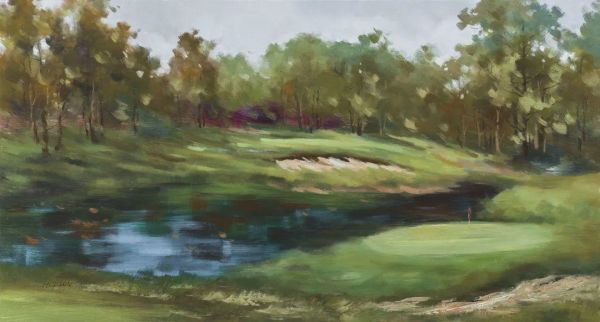
美国新泽西州银湖高尔夫俱乐部/Silver Lake Golf Ciub
120*65cm
雨露麻油画/Oil on Canvas
2022.4
1982年,少侠君顺利通过了硕士论文答辩,毕业后留校任教。他是一个做事极度认真的人,在我们班上旁听课时,风雨无阻,几乎没有缺席过,而班上的同学和我还会经常的翘课。他在三年的读研其间,完成了百万余字的欧洲美术史读书笔记,后来作为教材整理出来,足足有6大本。当时,因为长期缺少对外交流,这方面的资料非常稀缺,国内对欧洲美术史几乎没有完整的文字介绍,而少侠君的这套百科全书式的欧洲美术史,不仅大大提升了南京艺术学院的教材建设水平,也填补了国内的许多空白,这套教材后来正式出版后受到了广泛好评。再后来我在少侠君引导下,报考了南艺欧洲美术史方向研究的研究生,复习时用的就是他著书的这套教材,不敢说全部背下,但重要的章节也是如数家珍了。这种对教材建设的重视,一方面是少侠君个人有这方面的意识,加上他的刻苦努力。另一方面,也是南艺的大环境使然,那些年,像张道一、吴山、林树中等老先生都一直默默耕耘在教学的第一线,从未放弃在这方面的努力。在改革开放的初期,南艺就已经有了相对完整的各专业油印版的系列教材,为学校后来长足发展奠定了坚实的基础,也为中国高等艺术教育做出了自己的贡献。
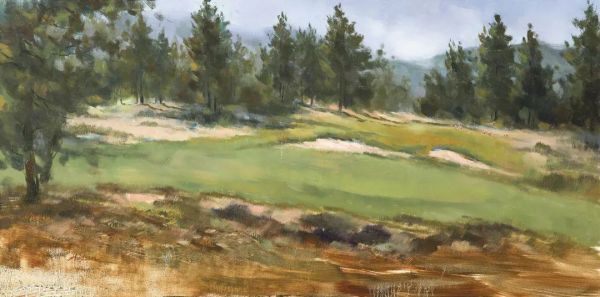
威尔士纽波特凯尔特庄园球场/Celtic Manor
120*60cm
雨露麻油画/Oil on Canvas
2021.1
少侠兄在教学的同时,一直笔耕不辍,先后又完成了《欧洲工艺美术史纲》《亚洲工艺美术史》和《非洲、美洲工艺美术史》的撰写,这三部著作出版后,引起工艺美术学界的巨大反响,也奠定了少侠君在这一领域的学术地位。著名学者张道一先生和奚静之先生对之都有高度评价,认为它们是不可多得的开山之作,意义重大,这三本书也成了许多重要艺术院校研究生和本科生的必备之书。接着,少侠君又有重磅成果推出,他与李小山合作撰写的《中国现代绘画史》轰动一时。这部著作,直面当下,切中时弊,对许多现当代艺术家进行了客观的批评和评价,这种胆略和见识无不震惊四座,可谓是一部惊世之作,在美术界掀起了巨大的波澜,也引起了广泛的讨论和争鸣,按现在的话语来说绝对是一个现象级的事件。
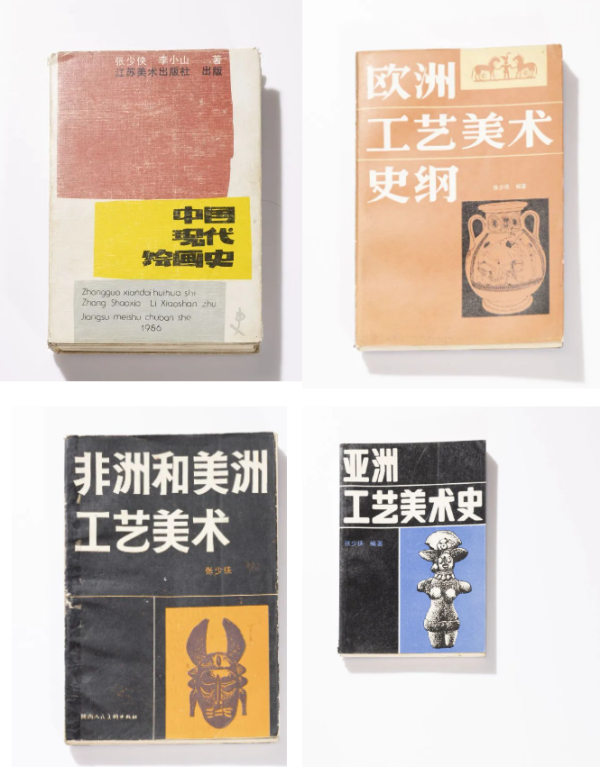
少侠君不仅学术成果丰硕,著作立身,同时也是一位深受学生爱戴的老师,他主讲的“欧洲美术史”是当时学校的金牌课程,很少会有学生翘课,甚至有不少其他系科的学生也来蹭课。多少年以后,南艺的毕业生在聚会的时候,还会有人学着他上课时的南京话腔调“鬼才戈雅……”,对他的丰富知识和深刻的见解佩服得五体投地,可见他对学生们的影响是多么的深刻和持久。
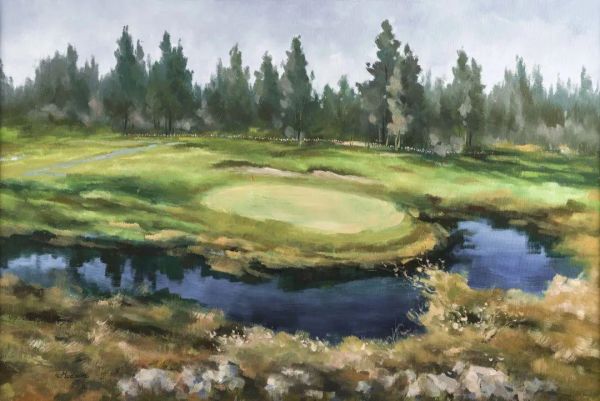
美国灰熊牧场高尔夫俱乐部/Grizzly Ranch Golf Club
120*80cm
雨露麻油画/Oil on Canvas
2022.4
南京艺术学院经过百余年的发展,如今已经成为全国艺术院校在学科建设方面的翘楚,跻身于第一方阵。少侠君虽然在上个世纪的80年代末就离开了南艺,但他对学校的学科建设是做出过重要贡献的。这件事情,包括一些细节如果我不去讲,就不再会有人知道,随着时间的推移也就会从我们的记忆中渐渐地隐去。少侠君当时不仅是南艺最年轻的艺术史副教授,同时还兼任着教务处科研科的科长。1985年,教育部开始了第二批艺术类博士点的申报工作。在当时,这项工作对许多学校来说显得既陌生又富有挑战,学校领导层的意见似乎也不完全统一。但少侠君以他非凡的学术远见坚定地认为学校一定要参与申报,他还专门去尚在犹豫中的刘汝醴先生家里做工作,希望他能牵头扛鼎,以他在全国的学术影响力,力争使学校申报成功。少侠君还指派我连夜赶到上海,把刘汝醴先生在上海美术出版社出版的《古埃及艺术》的样书取回来,作为申报的支撑材料。当然,我们最终是如愿以偿了。但就是这关键的一步,就使南艺的学科建设少走了多少弯路。后来,我在给兄弟院校的同仁们介绍南艺学科建设经验的时候,曾经这样说过:我们无非是比别人醒得早一点。其实,在这里,醒得最早的人应该是少侠君,至少是其中之一吧。
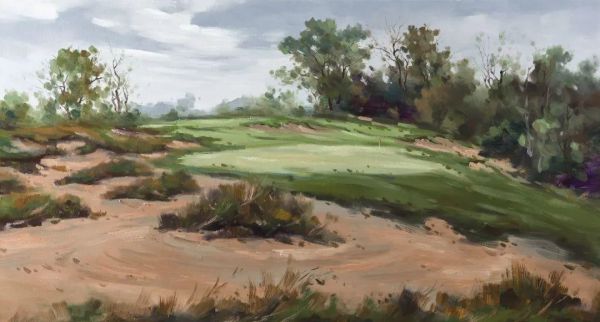
美国新泽西州松树谷高尔夫俱乐部/Pine Valley Golf Club
120*65cm
雨露麻油画/Oil on Canvas
2021.5
少侠君离开南艺后去了海南岛,在海南大学负责艺术学院的筹建工作。三年之后,又离开校园,泅水于商海。再之后,他是世界各地的跑,周旋于巨商巨贾之间,我们联系不多,消息还是有的,知道他在商界做得很成功。但以我对他的了解,他是身在商海,或是说心在商海却魂系艺术,艺术的基因早已溶解在了他的血液之中,无法摆脱。
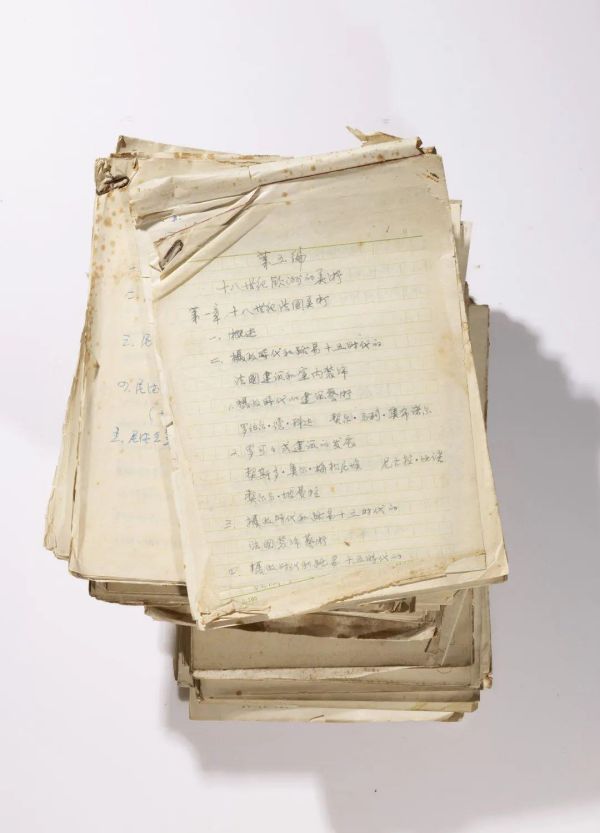
1997年,他主编出版了20卷本的《世界绘画珍藏大系》,同样也获得了巨大的成功。在我看来,这套书的学术价值是一个方面,更重要的是少侠君的一种心理自证和安慰,他需要一种学术的归宿感,或许这才是这套书出版的真正动力。

2018年,少侠君重拾画笔,以他去过的世界各地的高尔夫球场为对象,创作了五六百幅油画作品。同样地,在我看来,他的这些作品与其说是钟情于风景,倒不如说是钟情于回忆,钟情于艺术,忠实于内 心。
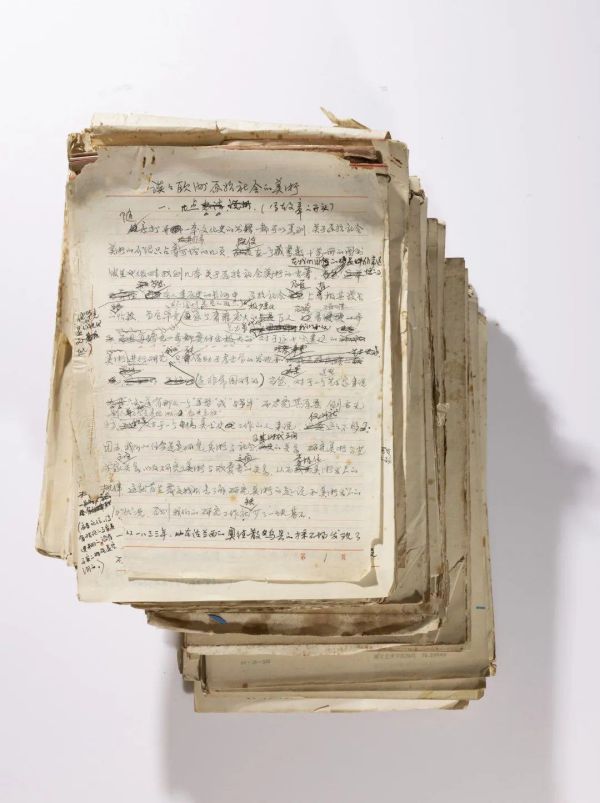
Hudson.Z and I
Liu Weidong
Professor of Art history , Nanjing University of the Arts
Hudson.Z and I are fellow disciples who both studied European art history under Mr. Liu Ruli. However, he is my senior schoolmate and has been a guiding light in my academic journey.
Our paths first crossed on the grounds of Nanjing Normal College (now Nanjing Normal University). At that time, he was a graduate student in the Department of Fine Arts at Nanjing Arts Institute (now Nanjing University of the Arts), while I was immersed in foreign languages studies at the college. Shaoxia, with scholarly diligence, attended our intensive reading, extensive reading, and oral English classes, which were essential for his studies. In those days, postgraduate students were considered academic elites and true prodigies, and I couldn’t help but admire him from the very beginning. Before college, I worked for three years in a Nantong factory, a true-blue member of the working class. I appeared more seasoned compared to classmates who had just graduated from high school, being three to four years their senior. Prior to college, I had dabbled in painting under the tutelage of an art teacher. My works even graced the walls of the public art center. Armed with some art knowledge, I carried a slight advantage and confidence when striking up conversations with him. I can’t recall the details of our initial exchange, but there were times when he sought my input on English learning, while I, in turn, sought his wisdom to unravel puzzles in art reading. Consider, for instance, our discussions on Picasso. Nowadays, everyone can chat about Picasso with ease, but back then, my comprehension of this modernist painter was at an entry-level. While Shaoxia’s explanations didn’t entirely unveil the mystery in my mind, they did enlighten me to alternative perspectives and possibilities in art creation and art history, igniting a spark that held profound significance. Slowly but surely, we became fast friends. I journeyed with him to Nanjing Arts Institute on multiple occasions, savoring delectable cafeteria meals and exploring the captivating world of art. Through him, I made the acquaintance of esteemed educators such as Dong Xinbin, Jiang Hongwei, and Ding Fang. It was as if I had breathed in the enchanting air of the art realm once more. Life is unpredictable, its course even more so. Who could have foreseen that the very institute that felt so alien to me would become my home for over four decades, and that I would ascend from a humble teacher to the post of school principal? Often, I muse over how different my life would have been had I not crossed paths with Shaoxia. Professor Huang Long, from the Department of Foreign Languages at Nanjing Normal College, had once encouraged me to pursue graduate studies in translation with him. However, I am genuinely content with my choices and my present circumstances.
In 1982, Shaoxia successfully defended his master's thesis and remained at the university as a teacher. He was remarkably diligent; while auditing our classes, he attended nearly every session without exception, unlike many of our classmates, including myself, who occasionally skipped classes. Over the course of his three-year postgraduate studies, he compiled over a million words of notes on European art history. These notes were later consolidated into six extensive volumes and served as valuable teaching materials. During that era, due to limited long-term external exchange, information in this field was exceedingly scarce, and there was virtually no comprehensive textual introduction to European art history available in China. Shaoxia’s encyclopedic approach to European art history not only significantly enhanced the quality of teaching materials at Nanjing Arts Institute but also bridged numerous gaps in China’s knowledge landscape. This collection of teaching materials garnered widespread acclaim upon its official publication. Subsequently, under his guidance, I pursued postgraduate studies in European art history at Nanjing Arts Institute. I utilized this compilation for review, and while I can’t assert that I memorized its entirety, I certainly retained the critical chapters. The focus on teaching materials resulted from Shaoxia’s personal dedication and hard work, but it also reflected the broader environment at Nanjing Arts Institute. During those years, senior teachers like Zhang Daoyi, Wu Shan, Lin Shuzhong, and others had been working quietly on the front lines of teaching for a long time, and they never gave up their efforts in this regard. In the early years of China’s reform and opening up, Nanjing Arts Institute had a relatively complete series of departmental textbooks for various majors, laying a sturdy foundation for the institution’s subsequent rapid growth and contributing significantly to the advancement of higher art education in China.
During his teaching tenure, Shaoxia remained a prolific writer and successfully authored A Brief History of European Arts and Crafts, A History of Asian Arts and Crafts, and A History of African and American Arts and Crafts. Upon the publication of these three works, they elicited an enthusiastic response from the field of arts and crafts, firmly establishing Shaoxia’s academic reputation in this domain. Renowned scholars Zhang Daoyi and Xi Jingzhi highly praised these works, considering them pioneering and of great significance. These three books also became essential reading materials for many graduate and undergraduate students at prestigious art institutions. Following this, Shaoxia accomplished another remarkable feat by co-authoring A History of Modern Chinese Painting with Li Xiaoshan. This work, addressing the contemporary art landscape with precision and keen insight, provided objective critiques and evaluations of numerous contemporary artists. Its audacity and perspicacity left the art community astounded, transforming it into a groundbreaking masterpiece that ignited significant discourse and debate within the art world. In today’s context, it unquestionably qualifies as a phenome non.
Shaoxia was not only prolific in his academic achievements and writings but also a teacher deeply beloved by his students. His course on European Art History was a flagship program at the time, with very few students ever missing a class. There were even students from other departments who came to audit his classes. Many years later, at reunions of Nanjing Arts Institute graduates, some would mimic his Nanjing-accented teaching style to express their deep admiration for his extensive knowledge and profound insights. This demonstrates how profound and enduring his influence was on his students.
Nanjing University of the Arts, in its century-long history, has witnessed substantial development and now stands as a prominent leader among art institutes in China. Shaoxia’s departure from the institute in the late 1980s should not overshadow his substantial contributions to the institute’s academic progress. Certain details related to these events risk fading from memory as time passes. During that period, Shaoxia not only held the distinction of being the youngest associate professor of art history at the institute but also assumed the role of heading the Research Department within the Academic Affairs Office. In 1985, the Ministry of Education initiated the application process for the second batch of doctoral programs in the field of art. During this period, this task posed unfamiliar challenges to many universities, and it appeared that the institute’s leadership held varying opinions on the matter. However, Shaoxia, with his extraordinary academic foresight, staunchly believed that the institute should actively participate in the application process. He went so far as to personally visit Professor Liu Ruli, who was still deliberating, with the hope of persuading him to take the lead and utilize his nationwide academic influence to ensure the institute’s successful application. Additionally, he tasked me with a late-night trip to Shanghai to retrieve sample copies of Professor Liu Ruli’s book, Art of Ancient Egypt, published by the Shanghai Art Publishing House, to strength our application. Ultimately, we achieved success in our application. However, it was this crucial step that saved NUA's academic development from taking many detours. When I later shared NUA’s experiences in academic development with colleagues from other institutes, I often remarked that we had merely awakened a bit earlier than others. In reality, the person who woke up earliest here should have been Shaoxia, or at the very least, one of the first.
Following his departure from the institute, Shaoxia embarked on a significant journey to Hainan, where he played a pivotal role in establishing the School of Arts at Hainan University. Three years later, he transitioned away from the academic campus and delved into the world of business. During this period, he ventured across the globe, engaging with influential figures in the business sphere. Although our interactions were limited, I received reports of his remarkable success in the business sphere. Yet, based on my familiarity with him, even though he occupied himself in the world of business, his heart remained devoted to the arts. The essence of art had ingrained itself in his very being, becoming an indelible part of his identity.
In 1997, Shaoxia undertook the role of editor and publisher for a 20-volume series titled World Painting Treasures, which garnered significant acclaim. While the scholarly worth of this series is undeniable, its greatest significance, in my opinion, lay in providing him with a sense of belonging and solace within the academic realm. He sought an academic sanctuary, and perhaps this was the true impetus behind bringing this series to fruition.
In 2018, Shaoxia rekindled his passion for painting, producing nearly five to six hundred oil paintings inspired by golf courses across the globe that he had personally visited. To my perception, these works transcend mere nostalgia or scenic representation; they symbolize his unwavering dedication to art and his commitment to staying true to his inner self.